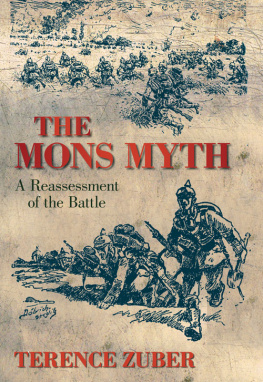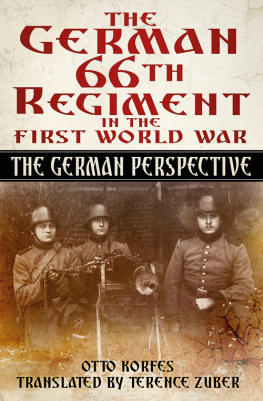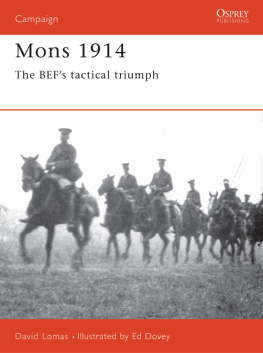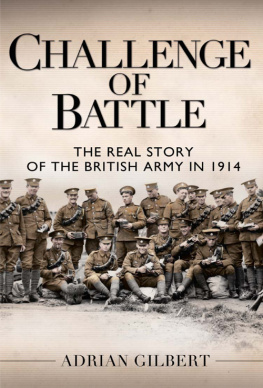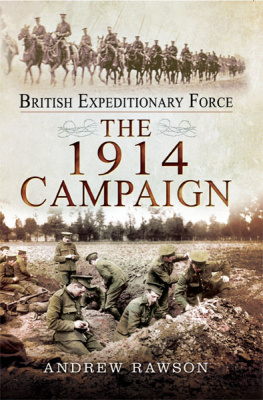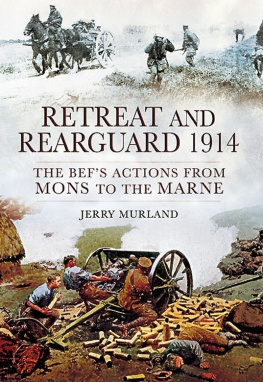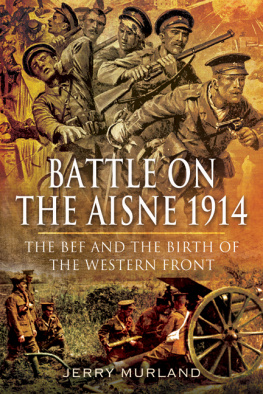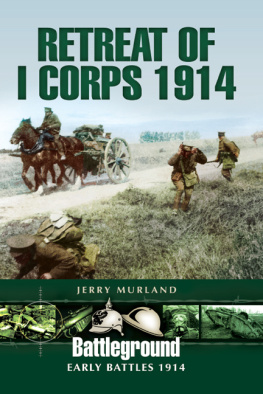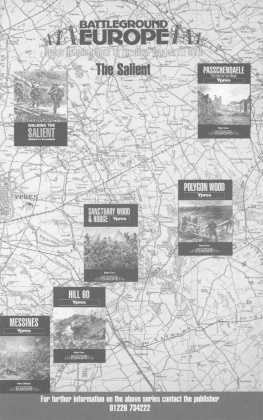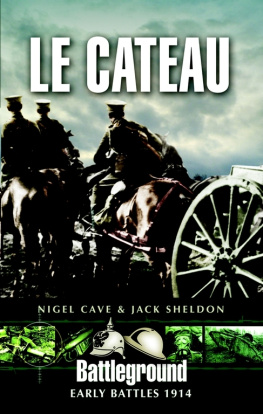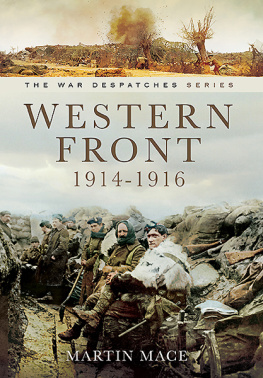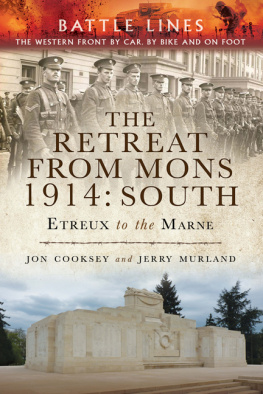
For the 9th (US) Infantry Regiment
Keep Up The Fire
I want above all to thank the staff of the library at the University of Wrzburg, who obtained hundreds of books for me through the superb German interlibrary-loan system. This book would not have been possible without their hard work and professionalism. Nevertheless, some gaps in my research remained, which I was able to fill at the Deutsche Nationalbibliothek (German National Library) in Leipzig and the Bayerische Nationalbibliothek (Bavarian National Library) in Munich. Both are superbly run and it is remarkable how much can be accomplished in a few days. The German National Library survived the Second World War without losses and its vast holdings are of exceptional value for research on the Imperial German Army. Gillian Margenson and Wolfram Knoblach were kind enough to put us up while I did my research in Munich. I would also like to thank the librarians at the Princeton University Library, the New York Public Library and the Library of the US Army Heritage and Education Center at Carlisle Barracks, PA.
New Martinsville WV (pop. 4,500), where we live, is a great place to write history. The pace is unhurried. Our car doesnt move for weeks at a time because everything is accessible on foot or with a bicycle. There is also a remarkable depth of local talent. At West Virginia Northern Community College, which is a block from our house, I was able to obtain some British and German books through the determined efforts of librarian Janet Corbett. The College Dean, Larry Tackett, provided invaluable assistance in preparing the photographs. Heather Wetzel, whose bookstore is two blocks away, once again drew the maps.
Publishing with The History Press was a pleasure. I would like to thank Robin Harries, Simon Hamlet and especially my copy-editor, Abbie Wood. I am not the easiest author to work with, but they put up with me. The History Press is a very professional outfit.
Once again my wife, Tina, got to tour another battlefield and sacrificed large parts of several vacations to allow me to work in libraries in America and Germany. She quietly supported this enterprise, for which I am profoundly grateful.
New Martinsville, WV
December 2009
Contents
1
It was foreordained that British historians would enshrine Mons and Le Cateau in the storied succession of British victories in northern France and Belgium. During the rail deployment to northern France in August 1914 British officers were well aware that they had passed near Agincourt and Crcy, that on 20 August the 9th Brigade bivouacked on the Malplaquet battlefield and that Mons is just south of Waterloo. The battle of Le Cateau was fought on the 568th anniversary of Crcy. These battles conjured up the names of the most famous of British commanders: Edward III, the Black Prince, Henry V, the Duke of Marlborough and the Duke of Wellington. Every British history of Mons and Le Cateau makes mention of these historic associations.
So it must follow that at Mons and Le Cateau another small professional British army, standing on the defensive and relying on training, discipline and firepower, delivered stinging defeats to a much larger continental enemy. As had the French at Agincourt, Crcy and Waterloo, so at Mons and Le Cateau the Germans attacked in solid blocks and were mown down in rows by precise British fire. This is what makes Mons and Le Cateau British victories, for even though the British were driven from their positions, the Germans suffered disproportionately heavier casualties.
One of the first histories of these battles was A. F. Beckes The Royal Regiment of Artillery at Le Cateau. It was written during the war by a gunner officer and shows that the principal themes of the British description of these battles were established almost at once. The historical precedents for Mons are made explicit: early in the book there is a comparison of the British artillery at Le Cateau with that of Waterloo. Becke maintains that the British II Corps was outnumbered 2.5 to 1. Nevertheless, the decision of the II Corps commander, Sir Horrace Smith-Dorrien, to fight at Le Cateau was the proper one; indeed, all of the British tactical decisions at Le Cateau were correct. The British gave the attacking Germans a fearful beating, so much so that II Corps was able to break contact and withdraw without any German pursuit, and the German army stayed a respectful distance away from the BEF until the British attacked at the Battle of the Marne.
The British official history was written under the guidance of Brigadier-General J. E. Edmonds in 192021. The legend of rapid rifle fire was also repeated by every subsequent Anglophone history of the battle.
The British official history says that German infantry tactics consisted initially of attacking en masse with the intention of simply overrunning the British position by weight of numbers. Only after the Germans felt the power of rapid rifle fire did they sometimes disperse. Eventually, German numerical superiority would force the British to retreat, but the British would go in good order. The few British units that were destroyed died gallantly. Acts of British individual heroism feature significantly, especially that of winners of the Victoria Cross. There is no criticism of British tactics or leadership.
There were few German sources available in 192021. Walter Bloem, a novelist, playwright and reserve captain in the Grenadier Regiment Number 12 (2nd Brandenburg), published Vormarsch in Germany in 1916, The only other German sources that were used were carefully selected to confirm the official British account of these battles.
The British official history included a folder with thirty-four maps. The only conclusion one could draw from Map 11 is that at Le Cateau six German infantry divisions and three cavalry divisions had attacked the three divisions of the British II Corps. This map has been reproduced by every subsequent book on Le Cateau. It is completely wrong.
Edmonds official history became the template for subsequent Anglophone histories of Mons and Le Cateau. All repeat that the the Germans thought British rapid rifle fire was machine-gun fire. All quote Bloem. All contend that the Germans massively outnumbered the British, attacked in solid blocks and were mown down in rows.
Edmonds description of Mons and Le Cateau has become common knowledge. This seems to have discouraged further study of the battles. Modern accounts are short, populist and do not stray far from Edmonds dogma. There has not been a new analysis of Mons and Le Cateau in the eighty-eight years since the British official history.
David Ascolis The Mons Star does not footnote the sources, there is no bibliography and German sources are not used. The war to the Ypres Salient in November 1914 is covered in 244 pages. Ascolis intent is to go one better than Edmonds. He is scathing concerning German generalship, as well as the generalship of the BEF commander, Sir John French. However, Smith-Dorrien, the commander of II Corps, is Ascolis hero, a worthy successor to the British commanders who had been victorious on the north European plain. The formula British rapid rifle-fire = machine gun fire is repeated. The Germans always outnumbered the British and their attacks were always conducted in massed formations, which eventually pushed the British back by sheer weight of numbers, but not until the Germans had taken awful casualties. The German answer [to firepower] was sheer weight of numbers. The infantrymen of the 3rd British Division at Nimy and Oburg were astonished to see the Germans advancing upon them in close columns. He quotes one Pony Moore of the 4/Middlesex: It was an unbelievable sight. You didnt need to aim. You just fired into the blue and they went down like flies, like a pheasant shoot without any beaters. After a bit they retired in disorder. In a way, it was sickening to see all those men lying there.
Next page
